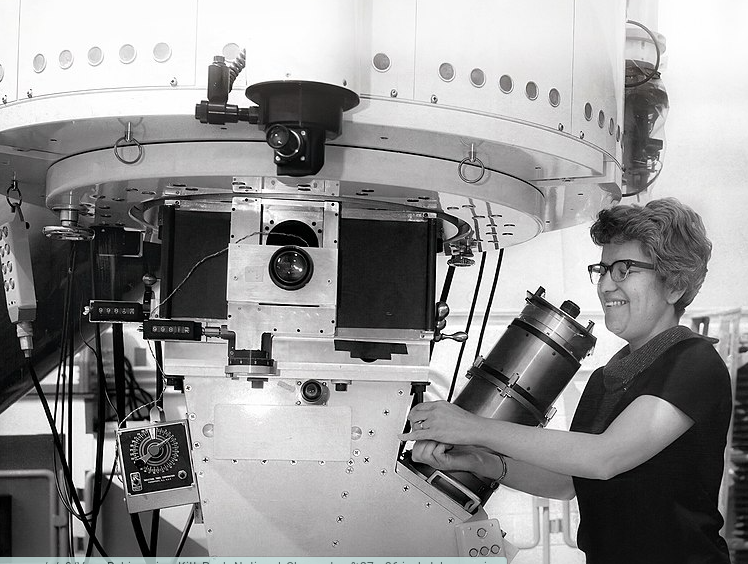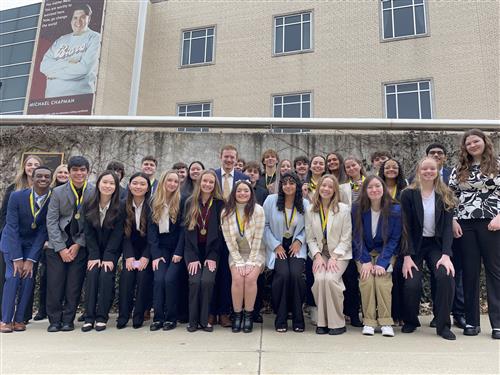March is Women’s History Month, and in honor of that we should remember and learn about women in history and the present that discovered, innovated, and made change.
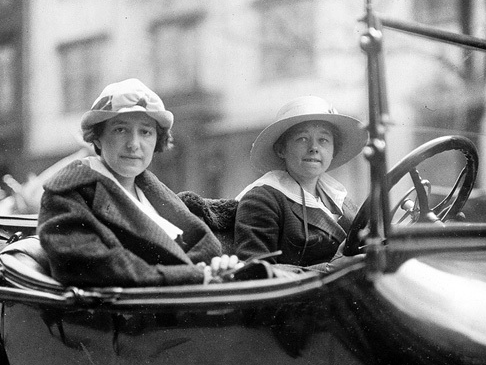
Playwright, journalist, women’s rights advocate, and novelist.
1. Sophie Treadwell
1885 – 1970
Our school’s drama teacher, Kelsey Moore, says a woman in history that we should talk about more is Sophie Treadwell. According to IMDb, she was a playwright, journalist, women’s rights advocate, and novelist. She wrote over 40 plays and she was one of the few female dramatists of the time to produce and direct her own work.
“Something that was interesting about her was that she was a very influential journalist, especially during her time. She was writing in the 1900s and she covered one of the most famous court cases at that time. Then Treadwell actually wrote a play about this case. She was a really awesome woman and also did a lot for speaking out for women rights,” Moore said.
The play Moore is referring to is called “The Machinal” and it is based off of the court case in which a woman marries for convenience and falls in love with a different man. In an attempt to free herself, she murders her husband. It explores concepts such as societal expectations and subtle feminism.
Treadwell set the framework for many other women in this field to succeed and her play is still highly regarded and studied by students.
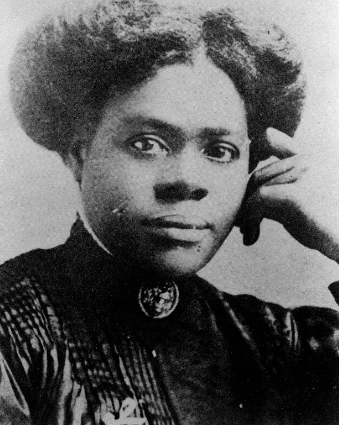
Black educator, civil and women’s rights leader, and government official
2. Mary Mcleod Bethune
1875 – 1955
A history teacher at our school, Jennifer Wells, suggested that Mary Mcleod Bethune is someone to highlight.
Women throughout history have been trailblazers, carving a path for gender equality. In Mary Mcleod Bethune’s case, racial equality.
According to the National Women’s History Museum, she is one of “the most important Black educators, civil and women’s rights leaders and government officials of the twentieth century.”
Bethune was a daughter to formerly enslaved parents and spent her life combating racism and creating equality for people of color.
She is notable because she became the highest ranking African American woman in government when she became director of Negro Affairs of the National Youth Administration under President Roosevelt. She fought to end discrimination and lynching.
She became vice president of the National Association for the Advancement of Colored Persons, an advisor for the Women’s Army Corps, and became the only woman of color at the founding conference of the United Nations in 1945.
Bethune was a determined educator and created one of the first schools for African American girls. She trail-blazed the feminist and the civil rights movements with her political involvement and advocacy.
“If we have the courage and tenacity of our forebears, who stood firmly like a rock against the lash of slavery, we shall find a way to do for our day what they did for theirs,” Buthane said.
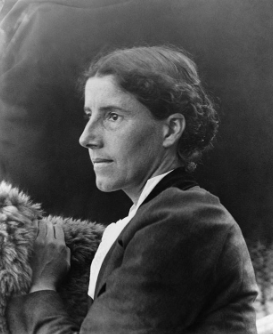
Writer, philosopher, and social reformer.
3. Charlotte Perkins Gilman
1860 – 1935
English teacher at our school, Makayla Jordan teaches a Women’s Literature unit where they study lesser known female authors. One of these authors is Charlotte Perkins Gilman.
According to the History of Women Philosophers and Scientists, Gilman was a writer, philosopher, and social reformer.
She wrote many books about society, especially about female life and feminism. One of her famous short stories was “The Yellow Wallpaper” which was about a woman’s descent into madness.
Her most well regarded works are “Women and Economics” which was about how women should have economic independence, and “Herland” which was a utopian genre novel which was about an all female society.
Gilman’s writing and ideas promoted women’s suffrage and professionalism of domestic work. She wrote about the struggles of being a woman in a misogynist society. Gilman sought after humanity and social reform in both education and social roles.
She changed history and many people’s views on women in society. And she is an important figure of suffrage and feminism that isn’t talked about enough.
“Here she comes, running, out of prison and off the pedestal: chains off, crown off, halo off, just a live woman.” Gilman said.
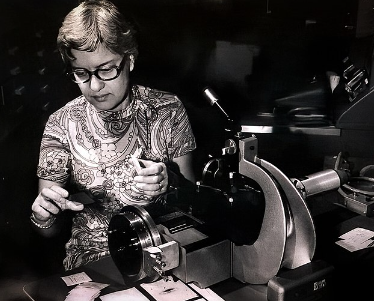
Astronomer
4. Vera Rubin
1928 – 2016
Another woman suggested by Jordan is Vera Rubin. Rubin was a National Medal of Science recipient for her pioneering work with dark matter.
According to The American Museum of Natural History, Rubin was always fascinated by space growing up and would spend hours gazing out her bedroom window. She was extremely insistent on receiving higher education, and despite the wishes of her father, attended college where she studied astronomy.
After making connections with like minded people at college, she worked with another astronomer, Kent Ford, who had developed an extremely sensitive spectrometer.
A spectrometer is a tool that is used by astronomers which splits the light collected by a telescope into colors, allowing astronomers to see more details of light from space.
Rubin and Ford used the spectrometer to spread out the spectrum of light from stars in different parts of spiral galaxies. By using the principle of the Dopler effect which is “the change in wave frequency during the relative motion between a wave source and its observer” they measured and studied these galaxies.
After years of studying and observing, Rubin and Ford calculated that galaxies contain ten times more dark matter than previously believed.
They discovered that at least 90 percent of mass in galaxies is unidentified and non-visible. They confirmed this with other astronomers’ findings
Although the scientific community was reluctant to accept Rubin’s findings, their observations were so simple and straightforward that it was concluded that they were correct.
As Rubin grew older, she continued to study the sky and in 1992, she discovered a galaxy. And in 1993 she was awarded the National Medal of Science. Despite this, she didn’t care about her achievements being awarded and was just satisfied with learning and discovering.
“We have peered into a new world, and have seen that it is more mysterious and more complex than we had imagined. Still more mysteries of the universe remain hidden. Their discovery awaits the adventurous scientists of the future. I like it this way.” Rubin said

Doctor, engineer, and NASA astronaut.
5. Mae C. Jemison
1956 – Present day
The librarians at our school recommend reading “Gamer Girls” by Mary Kenney, “Rise Of The Rocket Girls” by Nathalia Holt, and “Women in Space” by Karen Bush Gibson to learn about not-talked-about-enough women in STEM.
One of the women featured in these books is Mae C. Jemison. According to The National Women’s History Museum, Jemison is a doctor, engineer, and NASA astronaut. She became the first African American woman to travel in space.
In 1987, Jemison applied for NASA program and was selected to become part of NASA Astronaut Group 12. She worked on many projects with NASA during this time.
She received her first mission in 1989. She joined the STS-37 crew as a Mission Specialist.In 1992 Jemison and six other astronauts traveled to space in the shuttle “Endeavor”. This trip gave Jemison the title of first African American women in space. Jemison and her team made 127 orbits around earth. She left NASA shortly after returning home after serving six years as an astronaut.
She is currently working and leading the 100 Year Starship Project through the United States Defence Advanced Research Projects Agency (DARPA). This project is aiming to make human space travel to stars possible within the next 100 years.
She has received many awards for her achievements and is still following her dreams while making history. Jemison is an inspiration for girls and African Americans pursuing careers in space exploration.
“Never be limited by other people’s limited imaginations. If you adopt their attitudes, then the possibility won’t exist because you’ll have already shut it out. You can hear other people’s wisdom, but you’ve got to re-evaluate the world for yourself,” Jemison said

Known for their pioneering work in gene therapy
6. Emmanuelle Charpentier and Jennifer Doudna
1964 and 1968 – Present
day
Mrs. Jami Janson, a teacher at our school, who leads HOSA and teaches PLTW classes, thinks that Emmanuelle Charpentier and Jennifer Doudna are some women that we should be aware of.
According to the Nobel Prize website, Charpentier and Doudna were awarded the Nobel Prize in Chemistry in 2020.
“They discovered a type of gene therapy that fixes genes, So it’s going to bust open the door and be able to possibly fix a lot of genetic conditions that were not possible to fix earlier,” Janson said.
Charpentier and Doudna invented a type of gene therapy called CRISPR.
“It’s super cool because we can set it up for multiple genes at a time, while before we were only able to tackle kind of basic problems where there was only one gene that needed fixing,” Janson said.
According to The United Nations Educational, Scientific and Cultural Organization (UNESCO) CRISPR can be used to disable genes and correct genetic disorders.
This discovery has revolutionized medical advances and as Janson said, “bust open” possibilities in gene therapy, cell therapy, and immunotherapy opening new fields in agriculture and biotechnology.
The discovery by these two women can possibly save the lives of many people with genetic disorders such as cystic fibrosis and leukemia.
These women should serve as role models and inspiration for many generations to come. Their revolutionary ideas, discoveries, and thinking challenged and continue to challenge societal and gender norms. Without them, the world may have had less opportunities for women to do what they dream of doing.


